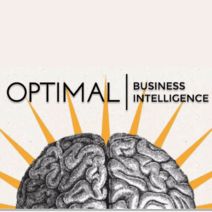
Optimal Data Engine
Everybody talks a different language When we decided to start building ODE we knew a few things already. One of those things was that most of our customers already had data warehousing technology. They had already…
Read moreArticle


Less than a decade ago, all data engineers I knew were in either “Team Oracle” or “Team Microsoft SQL Server”. Those were the most popular database management systems for data warehousing. Both were purposed for enterprise use, having distinct advantages and disadvantages. We used to have heated discussions on which platform is the best based on a range of criteria, such as ease of use, efficiency of data storage and access, packaged tools for data loading and transformation, and other features. However, with our customers’ migration to Snowflake, these discussions have become a thing of the past. I’m pretty sure Snowflake is the only database platform that is everyone’s favourite. It would be fair to say that many data engineers are now “Team Snowflake”.
Snowflake is a cloud-native data platform. Its founders reimagined the principles of data storage and compute using the cloud functionality in the most efficient way. Customer’s data is stored in a centralised repository in very efficient columnar compressed micro-partitions. Compute, which is data loading, transformations and analysis, is decoupled from storage. This allows clients to run as many and as large compute resources as needed, paying only for what they use. This accessibility makes the platform and its extensive features available to businesses of all sizes, not just large enterprises.

Snowflake boasts a growing list of innovative and useful features with each release, continually enhancing data security, efficient storage, and analytics availability for its customers.
While between projects, I decided to pursue a Snowflake certification to enhance my resume. Despite four years of experience with the platform, my work had focused on a specific subset of its features. To prepare for the certification, I needed to broaden my knowledge.
I downloaded a Study Guide from the Snowflake website and began reviewing documentation and completing on-demand courses from that list. While on-demand training offers an engaging experience, some courses even incorporating storytelling, others providing deep dives into specific topics, I found them somewhat frustrating. Much of the information was repetitive, and some crucial topics were covered too briefly for the certification exam. Therefore, while I highly recommend these courses for platform familiarity and free hands-on platform experience, they are not ideal for structured learning.
For a more structured approach, I sought a dedicated course. Finding the official Snowflake training quite expensive, I opted for a targeted Udemy course, fortunate to secure it at a discounted price of just US$13. This proved to be an excellent investment. The training was specifically geared towards exam questions but also provided valuable additional insights into platform features. I delved into micro-partitioning, clustering, data masking, data sharing, and the processes of copying files into and out of Snowflake. I also gained significant new knowledge about security topics, which are typically handled by others on my projects, for which I am grateful. With a few years of experience under my belt, the remaining topics were familiar, requiring minimal study time.
I passed the Core exam on my first attempt with a good score, officially becoming a Snow Pro (a title I genuinely enjoy!). However, I still found the exam challenging. Many questions presented two seemingly correct answers, demanding careful reading and thorough consideration of all details to select the right one. So, if you encounter a SnowPro, rest assured that they possess a deep understanding of the platform, not just sales pitches!
Although this was not on the exam, I found the course’s coverage of Snowflake’s new AI and ML functions, now readily available to all users, particularly fascinating. Having these features accessible on the same platform where your data resides significantly simplifies the work for data scientists and empowers anyone to use an AI chatbot to gain insights from their data.
With my certification complete, I am eager to assist our next customer in unlocking the full potential of everyone’s favourite cloud data platform.

Everybody talks a different language When we decided to start building ODE we knew a few things already. One of those things was that most of our customers already had data warehousing technology. They had already…
Read more
The Ensemble Logical Model is an enterprise-wide business model which, in an agile way, maps the business concepts within a given organization into an agile and adaptable model. – Remco Broekmans, LLC Author of ‘from Stories to Solutions’…
Read moreSquareweave is now Ackama.

We've merged with New Zealand company Ackama!
We're excited to be working with our Kiwi colleagues to deliver ambitious, purposeful digital products on both sides of the Tasman.
Common Code is now part of Ackama.

We’re now part of Ackama, delivering purposeful technology across the Asia-Pacific.
Together, we’re creating impact across energy, government, international development, and beyond. Delivering pragmatic, innovative solutions where they matter most.